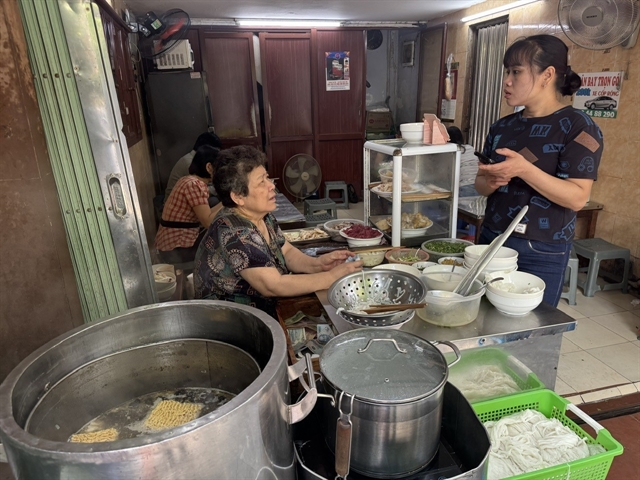 Sunday/Weekend
Sunday/Weekend

 |
| Botanical artist Phan Thị Thanh Nhã. Photo courtesy of the artist |
Phan Thị Thanh Nhã is a rare artist in Việt Nam who combines her scientific background with botanical illustrations. Sponsored by the Lân Tinh Foundation, Nhã has been a teaching assistant at the Plant Laboratory, University of Science, Vietnam National University, HCM City, since 2016, while also establishing herself as a botanical artist.
Her passion for botanical art was sparked 14 years ago when she worked as a student in an essential oil lab.
“I was inspired by the botanical illustrations in books by Prof Phạm Hoàng Hộ and Prof Lê Công Kiệt and wanted to create works like those,” Nhã told Thanh Niên (Youth) newspaper.
The book Weeds of Rice in Indonesia, featuring illustrations by Prof Ahmad Satiri, further motivated her to pursue this field. In 2021, Nhã received guidance from Canadian botanical illustrator Victor Wong and began formal training in drawing, colour fundamentals, and sketching. She also studied under artist Phạm Bá Lâm, honing her skills in graphite drawing, sketching, and watercolour techniques.
 |
| Nhã's illustration of Liparis ferruginea Lindl. exhibited at Orchid Extravaganza 2023 in Singapore |
Nhã is the first artist from Việt Nam to participate in international botanical illustration exhibitions, such as the Flora of Southeast Asia in Singapore in 2022, and the Margaret Flockton Award in Australia in 2023.
Her works have been featured in several exhibitions, including the TABA Plantae Documentary in Chinese Taipei in 2022 and 2024; Botanical Art Thailand: Tropical Plants of the World and Botanical Art Thailand: Herbs & Medicinal Plants in Thailand in 2023 and 2024, respectively; and most recently at the Inherent Nature exhibition in Hong Kong.
Meticulous process
According to Nhã, a botanical illustration requires the artist to thoroughly research and accumulate knowledge about the plant or flower, then effectively depict its characteristics in the accompanying descriptive text.
First, photographs are taken and sketches of the plant or flower are made in the field. Then, the branch or flower to be illustrated is cut, dried to create a specimen, and glued onto paper.
When it comes to the creative process, Nhã starts by sketching and arranging the details on a draft paper, which she then sends to leading experts in the respective family of the plant for feedback.
The process of correcting inaccuracies and adding details is repeated several times to ensure the final draft reflects a consensus between the artist and the botanist.
After such meticulous steps, she draws on A3 paper and uses tracing paper to refine it with pencil. Finally, she places the tracing paper over the official drawing paper – Arches for watercolour and Fabriano for pencil – before completing the artwork.
A botanical artwork must first be scientifically accurate. For example, when illustrating a leaf, the overall shape, number of veins, and surface texture must match the actual leaf and be consistent with the scientific description of the species.
Once scientific accuracy is ensured, the "art" aspect can be added by the artist, such as the perspective, materials used, dimensions of the illustration, and colour representation.
 |
| Nhã organises outdoor drawing sessions for children in which she guides them in sketching flowers and leaves – the first steps toward becoming a botanical artist. Photo courtesy of the artist |
“Botanical illustration is about full descriptions, whereas botanical art allows more individuality and creativity,” Nhã said.
At 33, she is passionate about contributing her work to textbooks and is working to establish a botanical illustration course at her university. She also organises outdoor drawing sessions for children, teaching them the basics of botanical art.
Despite her passion, Nhã acknowledges that botanical illustration has not yet become a viable profession in Việt Nam, unlike in countries like the UK and the US, where artists can fully support themselves. She is, however, determined to help the field grow in Việt Nam, saying, “If we don’t take action, when will Việt Nam have a thriving field of botanical illustration?”
Nhã is currently preparing works for the international exhibition Botanical Art Worldwide 2025, which will feature illustrations on the theme of crop diversity.
Organised by the Society of Botanical Artists, the exhibition aims to showcase the importance of plants to humanity and highlight the intersection of science and art. VNS


.jpg)

